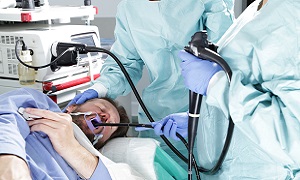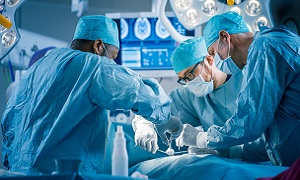Nissen Fundoplication
Nissen fundoplication referred to as Lap Nissen, is a surgery performed on patients suffering from Gastroesophageal reflux disease (GERD). This procedure is minimally invasive and it is meant to restore the functions of your lower esophageal sphincter, the valve between the esophagus and your stomach by wrapping the stomach around the esophagus.
It further helps to prevent the reflux of the acid and bile from the stomach into the esophagus.
Purpose
Patients suffering from GERD can usually control it with medication. However, if medications are not helping or if one wish to avoid their long-term use, then the patient can go for multiple surgeries. Nissen fundoplication is the most common surgery performed on GERD patients. This illness causes heartburn, regurgitation and dysphagia. Patients who have a good response to antacid therapy and also have a positive esophageal pH assessment are usually recommended this surgery.
Preparation
Other investigations can include esophageal manometry, done to measure the pressures generated within the esophagus with swallowing. In this test, a small thin catheter is passed through the nose down the esophagus. The catheter then measures pressures at multiple points within the esophagus. After this, you will swallow small gulps of water to initiate muscle movement within the esophagus known as peristalsis. This should continue down the esophagus in a coordinated fashion and will generate adequate pressure so that the water can pass into the stomach. It will also study the pressures within the lower esophageal sphincter. This test is important as it provides information on the lower esophageal sphincter tone as well as esophageal function.
It is also important to note that few conditions within the esophagus can mimic reflux disease. However, but they are treated in a completely different way.
Procedure
The surgeon will first wrap the top of your stomach around your lower esophageal sphincter, as this will tighten the muscle and prevent reflux. Usually, fundoplication is performed as a minimally invasive procedure. The wrapping of the top part of your stomach may be partial or complete.
The entire procedure should not take more than 2-3 hours. You may need to stay in the hospital for 2-3 days and you will be able to return to your normal activities in less than a month.
After the Procedure
For around 14 days, following a few dietary restrictions as advised is necessary. After about one month, the patients can stop taking all their medications. They can also take meals during late hours and lie flat in the bed, which they could not do prior to the surgery.
Risks and complications
Nissen fundoplication is known to be quite safe as well as effective and it has a mortality rate of less than 1%. According to studies, nearly 90 percent of patients, who went through the procedure is still free of any symptoms after ten years.
In few cases, there might be some complications, which can include “gas bloat syndrome”, dysphagia (trouble swallowing), dumping syndrome, excessive scarring, vagus nerve injury and in rare cases achalasia.
The fundoplication can also become undone over time in around 5–10% of cases, which can lead symptoms to reoccur. If a repeat surgery is required, the surgeon might consider using Marlex or any such artificial mesh for strengthening the connection. Postoperative irritable bowel syndrome is also possible and it might last for around two weeks.


